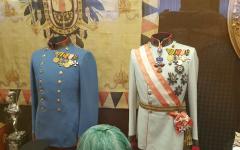A TURKISH ORIENT IN HUNGARY
Things you have not known about the Turkish-Hungarian relationship
In a traditional Hungarian restaurant, Goulash soup must be among the dishes served. Goulash is the well-known Hungarian meal made of meat and vegetables, seasoned with paprika. Paprika is also known to be a traditional Hungarian spice. However, do you know that if the Turkish had not taken the red pepper to Hungary in the beginning of the 18th century, our famous Goulash soup might not have its taste now? 300 years ago, Hungarians used sage to season their food instead of paprika.
In the recent years, we have started studying the Ottoman occupation of Hungary from a different point of view. It used to be believed by many that the Turkish did nearly nothing but destroyed and ruined our country, and the several good aspects of the 150-year period were left out from the discussion. The Habsburgs forced the Hungarians into battles against the Ottoman army in order to protect their own territories and occupy our country.
What was the relationship between the Turkish and the Hungarians like during the 150-year period and beforehand? What are the Turkish elements which were taken into Hungary and its culture during this time? These questions will be answered in the following article.
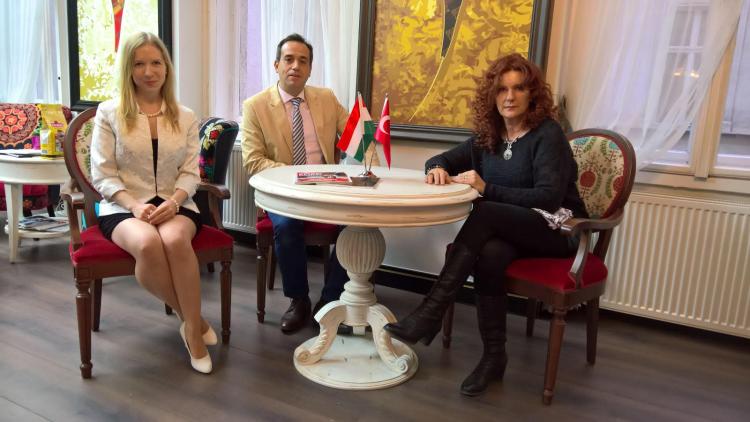
Barbara Káli-Rozmis, Mr. Fadil Basar and Valéria Barcsik
I, as the editor-in-chief of TUMAG Magazine, was interviewing Mr. Fadil Basar. Two members of the group of TUMAG – The Magazine for Conscious People - also attended the meeting, namely Valéria Barcsik, a famous Hungarian musician and composer and Zsuzsanna Árpádföldi, another bestseller writer of TUMAG. Our meeting took place in the wonderful building of the Yunus Emre Institute (Turkish Cultural Institute) located in Andrássy Road, which is a famous historical street of Budapest. Mr. Basar has been living in Hungary since 1995. During the previous 20 years, he managed to study the Hungarian culture and history, and his answers to our questions provide a great insight into the Turkish-Hungarian relationship, that is, this interview (and its sequels) is well-worth reading.
When Mr. Basar arrived in Hungary, he was the owner of a socks manufacturer. Within a few years, he was elected the chairman of the Association of the Hungarian Socks Manufacturers. Since 2001, he has been managing a construction company. In 2006, he became an elected member of the chairmanship of the Islamic Cultural Trust of Hungary. Since 2014, he has been the honorary chairman of this Trust. 2014 was the year when Mr. Basar became the Hungarian delegate of the second largest Association of Turkish Businessmen, which has more than 11 thousand members and includes 46 thousand companies. Besides, since September 2016, he has been an executive member of an association of the European Union, which unites the businessmen around the world.
Mr. Basar is very glad to have been living in such a friendly country for 20 years. Meanwhile, Hungary has become his second homeland. He says when he visits Turkey, he always thinks of the time in Hungary, and misses his second homeland. What is more, he feels as if Hungary has been his second motherland.
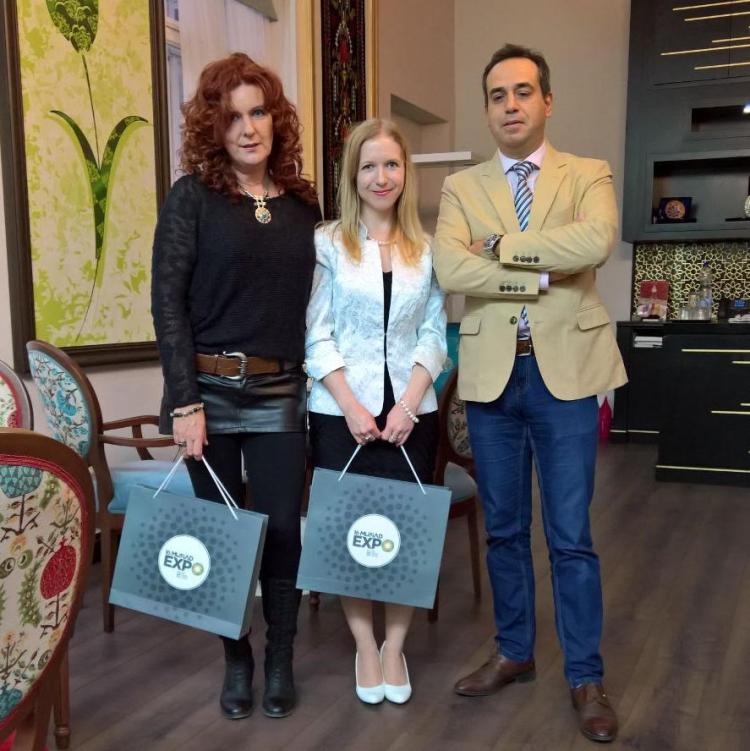
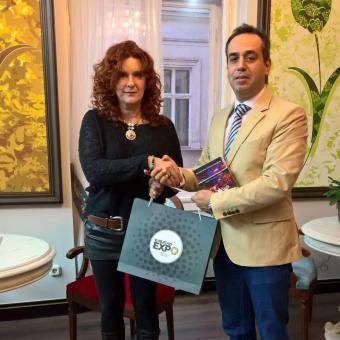
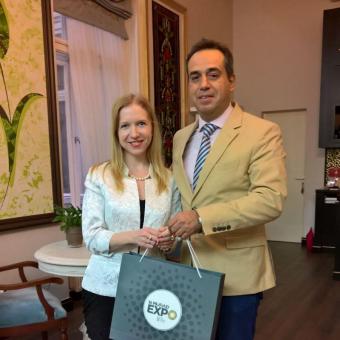
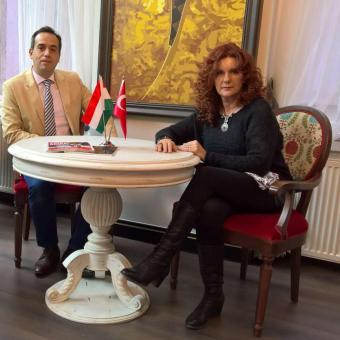
How did the 150-year Turkish reign affect the Hungarian culture and agriculture?
As regards agriculture, I would mention red pepper, aubergine and watermelon, which arrived in Hungary in the beginning of this period. The climate of the Carpathian Basin and the quality of its land let a kind of culinary revolution be possible by introducing new crops. Aubergine might not have been widespread for so long in Hungary, however, the word itself is a common Hungarian-Turkish word.
What kind of Hungarian cultural and material elements got into the Turkish culture?
To the best of my knowledge, there are no remarkable elements, however, the Hungarian Goulash (in Turkish Gulas) is very famous and widespread in Turkey.
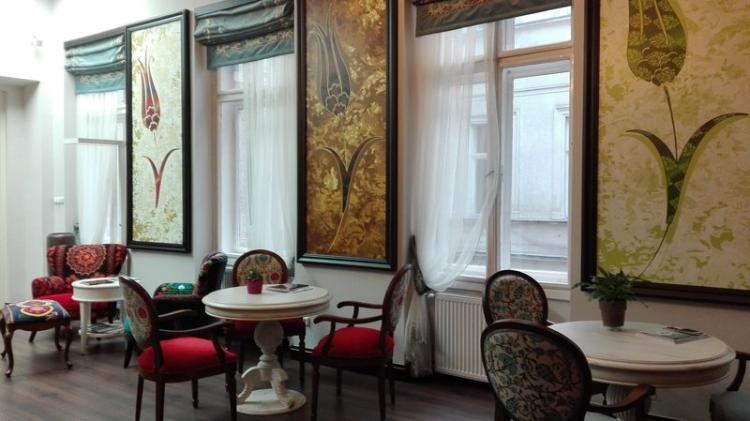
What effects did the Turkish architecture make on the Hungarian one?
First and foremost, I would like to express my gratitude to the Hungarians for preserving the Turkish buildings and monuments in such good conditions. I would mention the Gül Baba's octagonal tomb (türbe), minarets and the mosque in Pécs. An interesting architectural element which can be related to the Ottomans is the Turkish dome.
The Király Bath, which is located in the second district of Budapest, retains many of the key elements of a Turkish bath, such as the dome and the octagonal pool. The spa culture was introduced by the Turkish. The usage of the thermal water as sources of water and for heating buildings were started this time. I would like to thank the Hungarians for preserving them in such good conditions. Turkish lost their Hungarian territories in 1700. Since then 300 years have already passed. If the Serbs or other nations had been in the Hungarian’s place, all the Turkish monuments would have already been destroyed. If the Austrians had not occupied Hungary, many more monuments and buildings would have been preserved. I am grateful to the Hungarians for adapting the Turkish elements into their culture – such as the already mentioned Gül baba’s türbe – instead of ruining them.
Mr. Yakup Gül, director of the Yunus Emre Enstitüsü with Barbara Káli-Rozmis and Mr. Fadil Basar
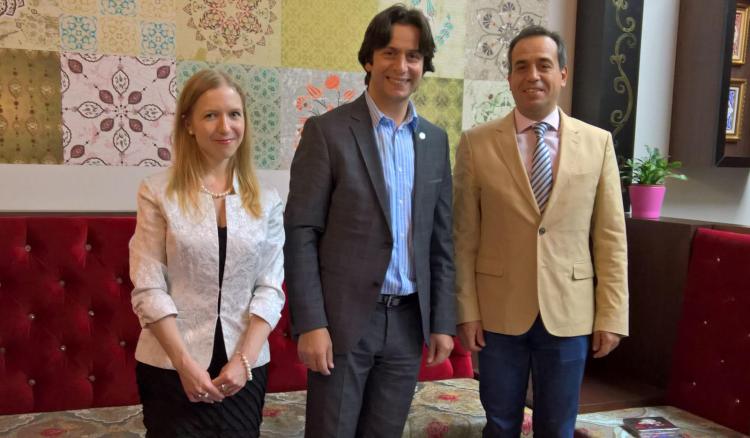
What are the most important connecting points between the Hungarians and the Turkish?
If the Turkish-Hungarian connection is discussed, we usually think of the period of the 150- year Ottoman occupation, however, there were common historical connections beforehand. Both nations have Central Asian roots, and were surrounded by the same environment. If we look it from the Turkish perspective, we can say that we are sister nations. We both had effects on each other, from that period we had a lot of common words, such as “balta, csizma, alma, papucs, szakáll” (axe, boots, apple, slippers, beard). Against all appearances, as regards vocabulary and grammar structures, the two languages have a lot in common. That is why we can learn each other’s languages quite easily. Let us mention an example: “There are a lot of little apples in my pocket” – In Hungarian - “Zsebemben sok kicsi alma van.” In Turkish – “Cebimde cok kücük elma var.” (The pronunciations of the two sentences are quite similar.)
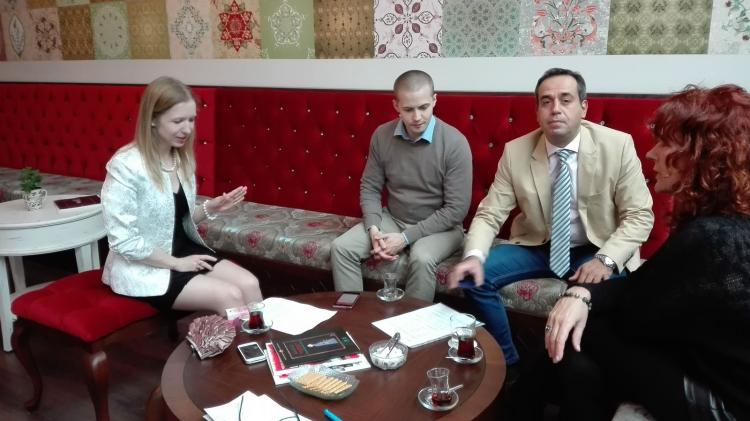
Barbara Káli-Rozmis, Gábor Bálint, Mr. Fadil Basar and Valéria Barcsik
Do you know the novel Egri csillagok /Eclipse of the Crescent Moon (literally: Stars of Eger)/ by Géza Gárdonyi or its film adaptation?
For the first time, I saw the film twenty years ago. I found it very interesting and exciting, however, we should not regard it as a documentary. I must say that I liked that the attitude of our nation appeared on the screen: the Turkish did not want to stay and settle in Hungary, their aim was reaching the Austrians and the Germans. The Turkish did not want to fight against the Hungarians. It is the historical fact. However, the Habsburgs forced the Hungarians to fight them.
Both in the book and the film, a talisman plays an important role. How important are talismans in the Turkish culture?
Allah’s eye is a well-known talisman in our culture. It can be bought at every single Turkish place where souvenirs are sold. The other object is the tasbih, which looks quite similar to the Christian beads. The tasbih has 99 beads, whenever we say the name of Allah, we pull one, and when we reach the 99th bead, we turn it round then we can start counting from the beginning.
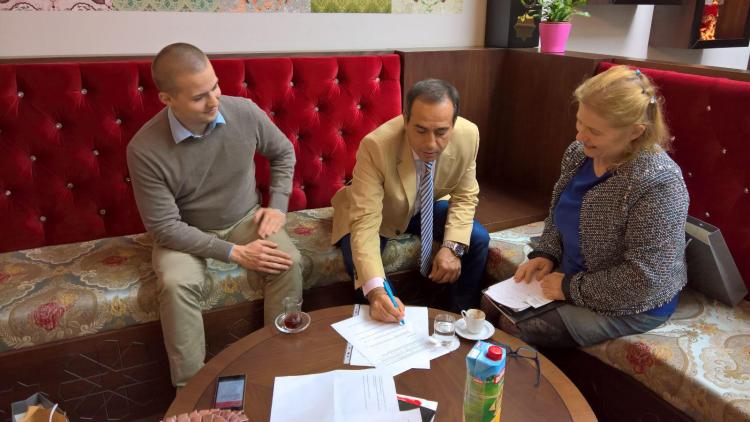
Gábor Bálint, Mr. Fadil Basar and Zsuzsanna Árpádföldi
Were there any mixed marriages or mixing between the Hungarians and the Turkish during the period of the 150 years?
Since the Islamic community was quite closed, we cannot talk about mixed marriages, which does not mean that there were none. If a Turkish man marries a woman outside the community, the woman has to be converted to the Islamic religion. However, it must be noted that nowadays many Turkish men living in Hungary have Hungarian wives, with whom they live in happy and balanced marriages.
In the second part of our interview series, we will continue the conversation with Mr. Fadil Basar about the Turkish-Hungarian relationship including famous Hungarians, such as Rákóczi and Kossuth, who are regarded to be Hungarian heroes in Turkey even today. We will also talk about the Turkish-Hungarian Interactive Rákóczi Museum in Tekirdağ (Rodosto) providing photos of the location.
Read the second part of the interview here: Ferenc Rákóczi II and the Rákóczi Museum in Tekirdağ (Rodosto)
If you want to read the introduction of the group of TUMAG, please visit: THE INTRODUCTION OF THE TUMAG ONLINE MAGAZINE
If you want to read the article in Hungarian, please visit: EGY TÖRÖK ORIENT MAGYARORSZÁGON



